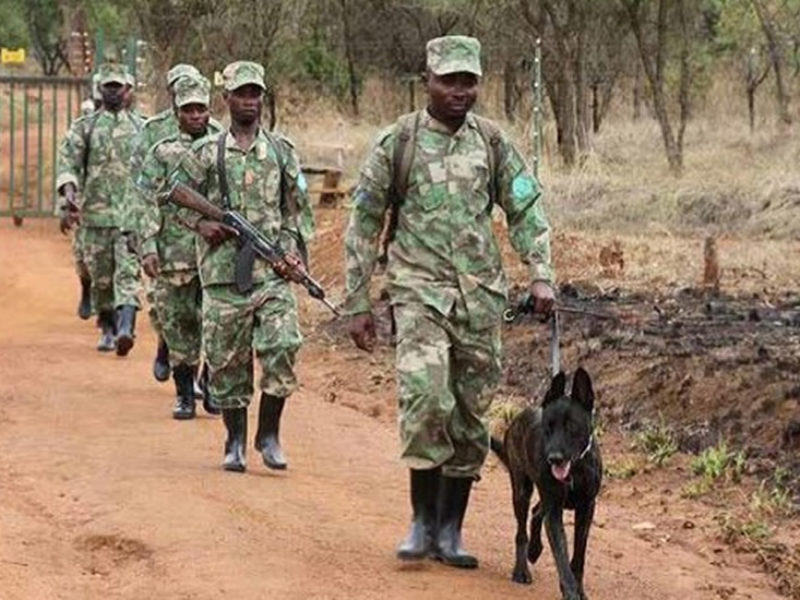Inganzo Art Gallery: Paradise for Youthful Artists
The post-genocide Rwanda saw many refugees coming back from the neighboring countries they had sought refuge in to reconstruct their country, battered for many years by ethnic conflict.
Among them was a new generation of visual artists who had spent their years outside the country. These youthful artists came back with artistic creativity they had learned outside the country, leading to creation of a booming art industry in the country.
Although in his mid 60s now, Epa Binamungu’s name is synonymous with the vibrant contemporary art scene thriving now in Kigali.
Birth of Inganzo Art Gallery
He established his Inganzo Art Gallery in the former Kigali Business Center (KBC) in Kacyiru 16 years ago, a neighborhood which began to draw in more affluent residents who were attracted by its great location and soon established a reputation as an artist community.
Epa Binamungu. The legendary artist says unlike some artists, he produces art “for the lovers of art” and not just for tourists. Having accomplished secondary school and later attended the Institute of Pedagogical Science University in 1975 in DR Congo where he majored in Biology and Chemistry, Binamungu decided to embark on his long desired art career, a choice that he says he has never regretted to this day.
Bringing visual art back to Rwanda
Binamungu says times following his return to Rwanda, at the end of the Rwandan Genocide against the Tutsi in 1995 weren’t easy, as people were still in shock, yet they didn’t recognize art at all.
“The few who seemed to develop interest used to ask me what I was drawing and this hurt me so much since it clearly showed a gap,” he explains. But he gathered more courage of always explaining to them concepts of his art, which worked out in turn.
Four years ago, Binamungu moved Inganzo away from the hustle and bustle of Kigali city to a serene rural environment at Masaka sector, Kicukiro district where he says is a center for youthful artists to come and explore their artistic talents and rapport with fellow artists.
Once inside Inganzo Art Center, the feeling one gets is that of being on an upcountry ranch without livestock. It’s all lush green – dense tree canopies all over, blooming flower gardens lining the neatly maintained lawns, and an abundance of fruit trees.
The art center has three parts. The “Inganzo In” is a modern gallery divided into various rooms where artists can showcase their finished products on the walls. The “Inganzo Off” is a big, white tented pavilion where artists can come, work and display their work while the “Inganzo Workshop” is where the artists produce their actual work.
“I have long nurtured a dream to have a place where artists can come together and just enjoy creating art in a serene environment. Inganzo Art Center welcomes the East African art community by providing a place for creative and innovative programming, spaces to create and display, and a schedule of art-related opportunities,” says Binamungu.
Since its inception, the new art center has hosted a variety of workshops and exhibitions for not only Rwandan artists but also from the East Africa region.
Inganzo Art Gallery rules 2017
In 2017, Inganzo hosted a group of 14 artists from Tanzania who were joined by 10 artists from Rwanda in what Binamungu says was to evaluate the artistic performance for the year and to artists from both countries to share their artistic ideas. Binamungu hopes to make this an end of the year annual event at Inganzo where artists from the region and beyond are going to come together and evaluate their performance for the year, while giving them a chance to bond and learn from each other.
Inganzo Art Center is also going to be an art research center and a residence for international artists who can come and develop creative ideas. “It was established for the seasoned artist and new talent to thrive,” according to Binamungu.
At the entrance of the Inganzo workshop is displayed a collection of carvings, statues, masks and figurines that Binamungu says he has been collecting all over the world during his over 40 years in the art industry.
Binamungu says unlike some artists, he produces art “for the lovers of art” and not just for tourists.
“Many artists display their artwork at strategic tourist attraction sites like national parks and even at the streets where they can easily be seen and bought by tourists. But having established myself in the industry, the choice of Masaka to build this center, away from Kigali, is an indication that clients will always come looking for you once you have established your name in the business,” says the veteran artist.

